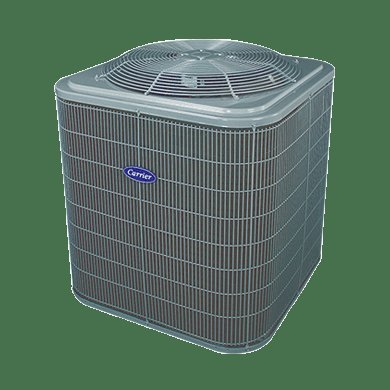Discover How Many Ton Ac For 400 Sq Feet – Expert Guide
To effectively cool a 400 square feet space, it is recommended to have a 1-ton air conditioning unit. This will provide optimal cooling efficiency, cost-effectiveness, and energy savings. With the right tonnage, your 400 square feet oasis can be transformed into a perfectly cooled haven of cool tranquility.
Imagine stepping into your 400 square feet oasis during the scorching heat of summer, only to find your air conditioning unit struggling to cool the space effectively. Frustrating, isn’t it? Finding the right air conditioning tonnage for your specific square footage can be a perplexing task, leaving many homeowners overwhelmed and unsure of where to start.
But fear not, for we are here to shed light on this essential matter. In this expert guide, we will unravel the mystery and help you discover just how many tons of AC you need to keep your 400 square feet sanctuary cool and comfortable.
Understanding the correct tonnage for your space is not only crucial for optimal cooling efficiency but also for cost-effectiveness and energy savings. Say goodbye to the confusion and say hello to a perfectly cooled 400 square feet, all with the knowledge gained from our comprehensive guide. Get ready to make informed decisions and transform your living space into a haven of cool tranquility.
I. Factors to Consider When Choosing the Right AC Tonnage for a 400 Sq. Feet Room
A. Room size and layout
One of the primary factors to consider when determining the appropriate AC tonnage for your 400 sq. feet room is the size and layout of the space. The dimensions of the room will directly impact its cooling requirements. Larger rooms with a higher volume will require a higher tonnage to adequately cool the space.
B. Insulation and heat load
The level of insulation in the room and the heat load it generates also play a significant role in determining the tonnage of the AC unit. Poor insulation and high heat load from sunlight exposure or electronic equipment can increase the cooling requirements, necessitating a higher tonnage to maintain a comfortable indoor temperature.
C. Climate and geographical location
The climate and geographical location of where the room is situated also impact the tonnage needed for effective cooling. Hotter climates with higher average temperatures will require a higher tonnage to combat the heat. Additionally, areas with high humidity levels may require larger AC units to control both temperature and humidity levels.
D. Number of occupants in the room
The number of people regularly occupying the room should also be taken into account. More occupants in a space generate additional body heat, which can increase the cooling requirements. If the room is frequently occupied by multiple individuals, a higher tonnage may be necessary to maintain a comfortable environment.
E. Electronic equipment and appliances in the room
Consider the presence of electronic equipment and appliances in the room as they generate heat and contribute to the heat load. If the room houses several heat-generating devices, such as computers, televisions, or kitchen appliances, it’s crucial to factor in their impact on the tonnage required for efficient cooling.
II. Understanding Air Conditioning Tonnage
A. Definition and measurement of AC tonnage
Air conditioning tonnage refers to the cooling capacity of an AC unit, measured in tons. Contrary to its name, this measurement has no direct correlation with weight but rather denotes the amount of heat an AC unit can remove from a space in one hour. One ton of cooling is equivalent to the heat absorbed or removed by melting one ton (2,000 pounds) of ice in a 24-hour period.
B. Relationship between tonnage and cooling capacity
The cooling capacity of an AC unit increases with higher tonnage. A higher tonnage unit has a greater cooling capacity and can cool a larger space more efficiently. It’s important to strike the right balance between tonnage and the size of the room to ensure optimal cooling performance and energy efficiency.
C. Importance of choosing the right tonnage for energy efficiency and comfort
Choosing the correct tonnage for your 400 sq. feet room is vital for both energy efficiency and comfort. An undersized AC unit will struggle to adequately cool the space, leading to increased energy consumption as the unit runs continuously. On the other hand, an oversized AC unit will cool the room quickly but may not run long enough to effectively remove humidity, resulting in a damp and uncomfortable environment. Selecting the right tonnage is crucial to strike a balance between energy efficiency and comfort.
III. Calculating Cooling Capacity for a 400 Sq. Feet Room
A. Using the British Thermal Unit (BTU) measurement
The British Thermal Unit (BTU) measurement is commonly used to determine the cooling capacity required for a room. The cooling capacity is calculated based on the BTU per square foot needed to effectively cool the space. For a 400 sq. feet room, the BTU measurement provides a valuable reference point for selecting the appropriate tonnage.
1. Determining cooling capacity needed based on BTU per square foot
The recommended cooling capacity for a room is typically based on a range of BTU per square foot. The general guideline suggests 20 to 25 BTU per square foot for cooling a room. To calculate the cooling capacity required for a 400 sq. feet room, multiply the square footage by the recommended BTU per square foot range.
Therefore, for a 400 sq. feet room, the cooling capacity needed would be between 8,000 and 10,000 BTU (400 sq. ft. x 20 to 25 BTU/sq. ft.).
B. Converting BTU to tons
While BTU is a common measure of cooling capacity, AC units are typically rated in tons. To convert BTU to tons, it’s important to understand the tonnage conversion factors.
1. Explanation of tonnage conversion factors
One ton of cooling capacity is equivalent to 12,000 BTU per hour. Therefore, to convert BTU to tons, divide the BTU by 12,000. For example, an AC unit with a cooling capacity of 24,000 BTU would be equivalent to 2 tons (24,000 BTU ÷ 12,000 BTU/ton).
C. Estimating tonnage based on industry recommendations
In addition to the BTU per square foot calculation, industry recommendations can provide valuable guidance on selecting the appropriate tonnage for a given square footage.
1. General guidelines for square footage and tonnage ratios
For a 400 sq. feet room, the general guideline suggests a tonnage range of 0.75 to 1 ton. However, this can vary based on factors such as insulation, heat load, and climate. It’s advisable to consult with HVAC professionals to determine the optimal tonnage for your specific requirements.
IV. Common AC Ton Options for a 400 Sq. Feet Room
A. 0.5-ton AC units
0.5-ton AC units have a cooling capacity of approximately 6,000 BTU and are suitable for smaller spaces. They are compact and energy-efficient, making them a good choice for limited square footage. However, their cooling capacity may be insufficient for rooms with higher heat loads or in hotter climates.
1. Pros and cons
- Pros: Energy-efficient, ideal for small spaces, cost-effective
- Cons: Limited cooling capacity, may struggle with high heat loads
2. Suitability for room size and heat load
0.5-ton AC units are suitable for smaller rooms with lower heat loads. They can effectively cool spaces that do not require high cooling capacities, such as small bedrooms or home offices.
B. 1-ton AC units
1-ton AC units have a cooling capacity of approximately 12,000 BTU and are a popular choice for small to medium-sized rooms. They offer a balance between cooling capacity and energy efficiency, making them suitable for various environments.
1. Pros and cons
- Pros: Energy-efficient, suitable for small to medium-sized rooms, versatile
- Cons: May be undersized for larger rooms or high heat loads
2. Suitability for room size and heat load
1-ton AC units are well-suited for small to medium-sized rooms with moderate heat loads. They can effectively cool bedrooms, living rooms, or small offices.
C. 1.5-ton AC units
1.5-ton AC units have a cooling capacity of approximately 18,000 BTU and are suitable for larger rooms or spaces with higher heat loads. They offer increased cooling power and are commonly used in bedrooms, living rooms, or small apartments.
1. Pros and cons
- Pros: Increased cooling power, suitable for larger rooms, efficient
- Cons: May be oversized for smaller rooms, higher initial cost
2. Suitability for room size and heat load
1.5-ton AC units are ideal for larger rooms or spaces with higher heat loads. They can effectively cool master bedrooms, larger living rooms, or open-plan areas.
D. 2-ton AC units
2-ton AC units have a cooling capacity of approximately 24,000 BTU and are designed for larger rooms or spaces with significant heat loads. They provide ample cooling power and are commonly used in commercial spaces or larger residential areas.
1. Pros and cons
- Pros: High cooling capacity, suitable for large spaces, effective
- Cons: Higher energy consumption, may be oversized for smaller rooms
2. Suitability for room size and heat load
2-ton AC units are suitable for larger rooms or spaces with substantial heat loads. They can effectively cool large bedrooms, living rooms, or commercial areas.
V. Other Factors to Consider When Choosing AC Tonnage
A. Energy efficiency ratings (EER and SEER)
When selecting an AC unit, consider its energy efficiency ratings. The Energy Efficiency Ratio (EER) and Seasonal Energy Efficiency Ratio (SEER) indicate the unit’s energy efficiency. Higher EER and SEER ratings signify greater energy efficiency, resulting in lower electricity consumption and reduced operating costs over time.
B. Additional features and functionalities
Explore the additional features and functionalities offered by AC units. Features such as programmable thermostats, sleep modes, and energy-saving settings can enhance comfort and energy efficiency. Consider your specific needs and preferences when evaluating these features.
C. Budget considerations
Understand your budget limitations and consider the initial cost and long-term operating costs of the AC unit. While higher tonnage units may offer greater cooling capacity, they may also come with a higher price tag. Find a balance between tonnage, energy efficiency, and budget to make an informed decision.
D. Maintenance and servicing requirements
Regular maintenance and servicing are essential for the optimal performance and longevity of your AC unit. Consider the maintenance and servicing requirements of different tonnage options. Some units may require more frequent maintenance or specialized servicing, which should factor into your decision-making process.
VI. Consulting with HVAC Professionals
A. Importance of professional assessment and recommendations
While this guide provides valuable information, it’s always recommended to consult with HVAC professionals for a comprehensive assessment and personalized recommendations. HVAC experts can assess your specific requirements, taking into account factors such as insulation, climate, and heat load, to guide you in selecting the perfect AC tonnage.
B. Hiring a reputable HVAC contractor
1. Checking licenses and certifications
When hiring an HVAC contractor, ensure they hold the necessary licenses and certifications required by your local authorities. This ensures their expertise and compliance with industry standards.
2. Reading customer reviews and testimonials
Read customer reviews and testimonials to gain insights into the contractor’s professionalism, expertise, and customer satisfaction levels. This will help you make an informed decision and choose a reputable professional.
C. Benefits of professional installation and maintenance
Professional installation and regular maintenance by HVAC experts are essential to ensure the optimal performance and longevity of your AC unit. Proper installation guarantees the efficient operation of the unit, while regular maintenance prevents potential issues and maximizes energy efficiency.
VII. Conclusion
Choosing the right AC tonnage for your 400 sq. feet room is crucial for optimal cooling efficiency, energy savings, and comfort. Factors such as room size, insulation, heat load, climate, and the number of occupants must be considered. Taking into account industry recommendations, BTU calculations, and tonnage options, you can make an informed decision about the most suitable AC unit for your needs.
Remember to consult with HVAC professionals for personalized recommendations and ensure professional installation and maintenance for the best performance and longevity of your AC unit. With the right tonnage and proper care, your 400 sq. feet room will transform into a cool and comfortable sanctuary, even in the hottest summer months.
ac according to room size | ac for 150 sq feet room | ac for 250 sq feet room |
Frequently Asked Questions (FAQ)
What is the recommended ton AC for a 400 sq ft room?
What happens if I choose a higher ton AC for a 400 sq ft room?
Can I use a lower ton AC for a 400 sq ft room?
What other factors should I consider when choosing an AC for a 400 sq ft room?
How can I calculate the exact tonnage required for my 400 sq ft room?
Final Summary: Choosing the Right AC Tonnage for a 400 Sq. Feet Room
In conclusion, choosing the right AC tonnage for a 400 sq. feet room requires considering factors such as room size, insulation, heat load, climate, and the number of occupants.
The dimensions of the room directly impact its cooling requirements, with larger rooms needing a higher tonnage. Poor insulation and high heat load from sunlight exposure or electronic equipment can increase the cooling requirements.
Hotter climates and areas with high humidity levels may require larger AC units. The number of occupants and the presence of heat-generating electronic equipment also impact the tonnage needed. Air conditioning tonnage is measured in tons and denotes the amount of heat an AC unit can remove from a space in one hour.
A higher tonnage unit has a greater cooling capacity but striking the right balance is crucial for energy efficiency and comfort. The recommended cooling capacity for a 400 sq. feet room is between 8,000 and 10,000 BTU, which can be converted to 0.






